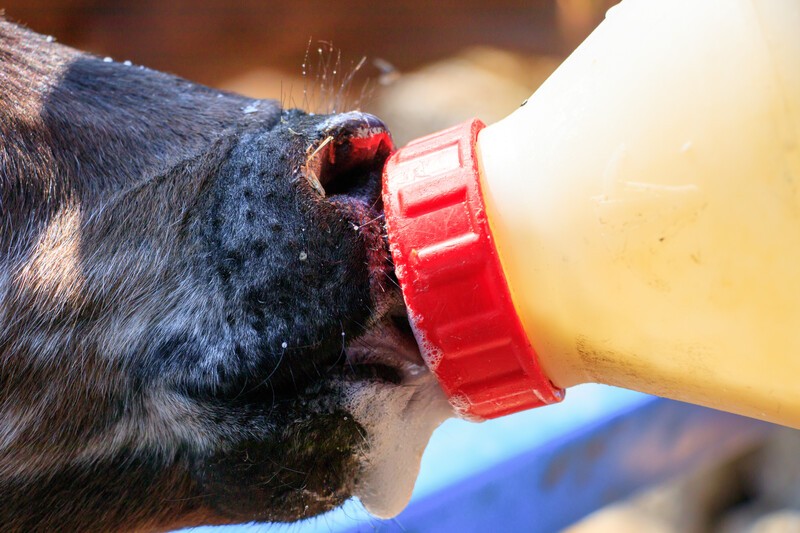
University of Guelph Assistant Professor of Ruminant Nutrition Michael Steele and his colleagues – including Professor Leluo Guan and students Jade Pyo and Koryn Hare — performed a study that recently was published in the Journal of Dairy Science. In the 24-calf trial, all animals received colostrum 2 hours after birth at a rate of 7.5% of bodyweight (BW).
From 12 to 72 hours, 8 calves each were fed every 12 hours at 5% of bodyweight, receiving one of three liquid feed types:
Colostrum – Whole, unpasteurized colostrum.
Mix – Half colostrum, half whole milk, intended to mimic transition milk.
Whole milk – Standard whole milk, which most closely followed the current feeding practices in the industry.
Each calf was equipped with a jugular venous catheter at one hour after birth to allow for frequent collection of blood samples. Intestinal tissue samples were harvested after calves were euthanized at 75 hours of age.
The researchers found significant differences in intestinal development for the groups fed colostrum and the mix versus those fed whole milk, including:
Villi height was 1.8 times lower in the proximal jejunum, and 1.5 times lower in the distal jejunum, on average for the whole-milk-fed calves compared to the other two groups. In the duodenum, villi height was 1.5 times higher for the calves fed the mixed ration versus those fed whole milk, and 1.4 times higher in the jejunum between the same two groups.
Surface area in the proximal jejunum was 60% lower for whole milk than colostrum, and 58% lower for whole milk than the mix. Similar, whole-milk-fed calves had 38% less surface area in the ileum than those fed colostrum, and 58% less than those fed the mix. In the distal jejunum, the mix produced 54% greater surface area than whole milk.
“We expected a three-tiered set of outcomes favoring colostrum, then transition milk, then whole milk, but that didn’t turn out to be the case,” said Steele. “While there was significant value in favor of feeding either colostrum or transition milk over whole milk, there was little differentiation between the first two.”
The researchers concluded that feeding actual transition milk from Days 2 and 3 fresh-cow milkings – or creating the same type of mix by combining colostrum 1:1 with whole milk or milk replacer – can sufficiently capture the same nutritional and immunological value as feeding whole colostrum for 3 days.
“We are hopeful that this evidence initiates a shift in the current industry practice of switching calves to whole milk or milk replacer immediately after the initial colostrum feeding,” said Steele.























